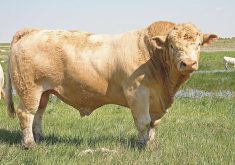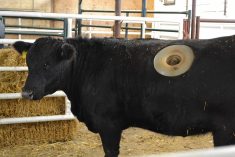Although feedlot pen riders do a good job of identifying lame cattle needing treatment, there has been very little work done to fully understand lameness in that sector.
Knowing the types and prevalence of lameness could help to build better ways to treat and prevent it, says Agriculture and Agri-Food Canada researcher Karen Schwartzkopf-Genswein.
“We need to pay more attention to lameness and the causes of it, particularly in the feedlot where management factors, type of cattle, and pen conditions can have a big influence,” she says. “In many cases it is obvious that the animal is in pain associated with lameness and it is important that these animals be dealt with quickly and appropriately.
Read Also

Grazing ‘sweet spot’ boosts pasture performance
Timing-focused approach to pasture management touted to boost forage growth, livestock gains while also cutting farmer labour and inputs
“The tricky part is knowing when an animal should be culled because, depending on the cause and the severity of the lameness, some animals may improve.”
Schwartzkopf-Genswein and her team at the Lethbridge Research Centre along with researchers at the University of Calgary and Iowa State University are looking at the occurrence of lameness in healthy and chronic pens by season and its relationship to other health problems. In addition, they will characterize types of lameness and identify environmental and managerial factors associated with increased lameness.
“The main focus of this project is beef cattle welfare, but obviously it is strongly tied to economics,” she says. “If an animal is lame it doesn’t get up to feed or drink so it’s losing weight, not to mention the other expenses associated with this condition including increased labour and drug costs.”
Assessment challenges
Lameness is not always easy to diagnose — although it is obvious an animal is in pain, it’s not always clear why. The only way to get a confirmed diagnosis is to do a necropsy on a foot after slaughter.
Visual assessment is one of the few tools used for diagnosis and it can be difficult on a herd basis or to get a good idea of what is actually causing the problem.
It can also be easy to misdiagnose what is causing lameness, Schwartzkopf-Genswein says. Often, feedlot records will show the diagnosis as foot rot when it could be one of many other conditions such as hairy heel wart or even an injury.
To get a better understanding of the issue, Schwartzkopf-Genswein and her team are working with two feedlots in Alberta. They are recording all risk factors associated with lameness including diet, pen conditions, weather, and distance transported.
In each case, feedlot staff pull lame cattle from the pens. Once a week the animals are assessed based on several factors. First, a ‘gait score’ is completed where each animal is given a lameness score between one and five. As well, each animal has their hooves cleaned and visually assessed to determine overt signs (lesions, injuries, swelling hoof abnormalities) specific to different types of lameness.
“We look for lesions and record the size and characteristics of each lesion for example, is there swelling, bleeding, pus or smell associated with it,” says Schwartzkopf-Genswein.
For each lame animal, blood, hair and saliva samples are taken to assess immunity, ‘substance P’ (a biomarker for pain), and cortisol levels to detect how stressed each animal is. As well, an infrared, heat-sensitive image of the leg is taken to see where inflammation is occurring. All lame cattle that need to be culled are further assessed by conducting a post-mortem to determine what caused the lameness.
The first year of this two-year study has shown some interesting results. Approximately 22 per cent of feedlot cattle were treated for some form of illness, with about six per cent treated for lameness. And while foot rot is the most common form of lameness, there are increasing incidences of hairy heel wart, a disease more commonly associated with the dairy industry. That could be because it has been misdiagnosed in the past, says Schwartzkopf-Genswein.
Next steps
One of the study’s goals is to create better diagnostic tools, says Schwartzkopf-Genswein.
“With each type of disease we would like to build a disease profile. For example, we could show that foot rot has substance P levels at a certain level while cattle diagnosed with hairy heel wart may have a level that is much higher,” she says. “Understanding the individual disease profile will give feedlot managers a better understanding of the disease, if certain types are more painful, if pain increases as the problem persists and to what extent.”
This will give feedlot managers a better idea of how an animal’s health will progress. If, as with foot rot, they will improve within a few days with treatment, or if in the case of more chronic types of lameness, will the animal actually recover and if so how long will it take?
All of this will help to give producers better information on treatment and information to develop cull strategies if necessary.















